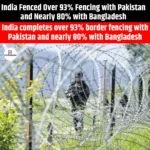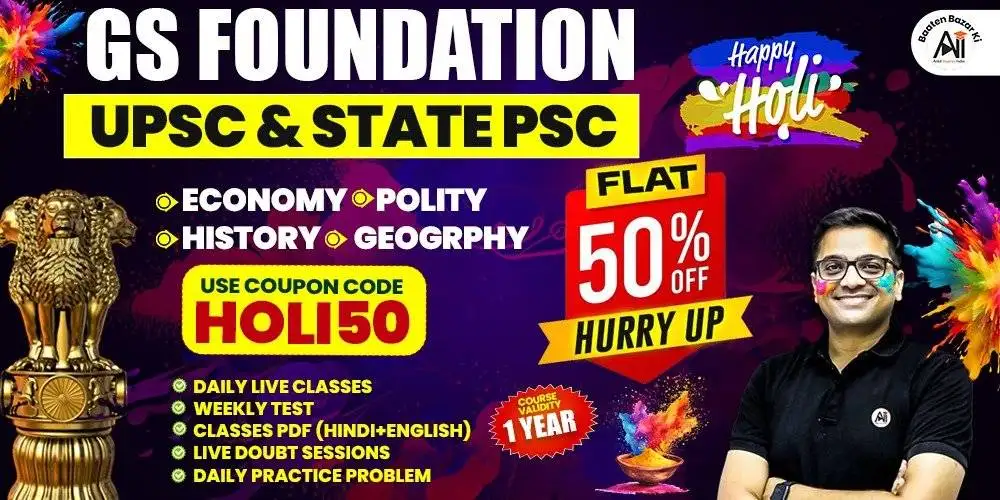PM Vishwakarma Scheme
|
General Studies Paper II: Government Policies & Interventions, Welfare Schemes |
Why in News?
Recently, the PM Vishwakarma Scheme completed two years and in this period nearly 30 lakh artisans and craftsmen have been registered. The scheme has emerged as a transformative step of government that is continuously supporting traditional artisans while empowering them.
What is the PM Vishwakarma Scheme?
- About: The PM Vishwakarma Scheme is a flagship initiative of the Central Government that focuses on reviving and supporting the traditional artisan and craftsman sector. The programme was launched in September 2023 with the idea of giving institutional recognition, financial assistance, and skill development support to lakhs of artisans across the country.
- Objectives:
-
- Skill Development: One of the main goals is to provide training in modern techniques while also refining traditional skills.
- Financial Empowerment: The scheme aims to provide collateral-free credit support up to a certain limit. This helps artisans invest in raw materials, tools, or expansion of their craft.
- Recognition: Through official registration, artisans receive identity and social respect. The objective is to make them part of the formal workforce and create pride in their work.
- Toolkits: The scheme seeks to provide upgraded toolkits that enable craftsmen to improve the efficiency and durability of their work.
Eligibility of PM Vishwakarma Scheme
-
- Nature of Work: The scheme is open to artisans and craftsmen engaged in the 18 listed traditional trades which include occupations like blacksmiths, carpenters, goldsmiths, barbers, washermen, potters, cobblers, masons, and similar professions that involve skilled manual work.
- Age Criteria: Beneficiaries must be 18 years or above to apply. This ensures that support is provided to adults who are active in the workforce.
- Employment Condition: Only individuals who are practicing the trade on a self-employed basis and are not working in government or organized sector jobs are eligible.
- Family Benefit Restriction: Only one member from a family can avail benefits to ensure wider distribution of resources across households.
- No Loan: The scheme is open only to those individuals who have not taken loans under PMEGP, MUDRA, or PM SVANidhi during the last five years, except in cases where such borrowings were fully repaid within the period.
Implementation of PM Vishwakarma Scheme
- Executing Agencies: The scheme is implemented by three primary agencies: the Ministry of MSME, the Ministry of Skill Development and Entrepreneurship (MSDE), and the Department of Financial Services (DFS).
- National Steering Committee (NSC): The National Steering Committee serves as the apex decision-making body. It is constituted by the Ministry of Micro, Small and Medium Enterprises (MSME). This committee has the authority to approve policy changes, add new categories of trades, and review progress. It is required to meet at least twice a year.
- State Monitoring Committee (SMC): The State Monitoring Committees function at the state level. They are responsible for coordinating with the central agencies while also ensuring operational delivery in every state. These committees act as a bridge between the apex body and local authorities.
- District Implementation Committee (DIC): At the grassroots level, the District Implementation Committees take charge of actual roll-out. These bodies supervise beneficiary registration, training centres, toolkit distribution, and credit linkage. They also coordinate with state authorities and provide real-time updates.
- Credit Oversight Committee: The Credit Oversight Committee ensures smooth flow of loans and financial incentives. It is chaired by the Secretary of the Department of Financial Services (DFS) and includes members such as the Secretary of MSME, a representative of the Department of Expenditure, the Reserve Bank of India (RBI), the Small Industries Development Bank of India (SIDBI), and the Credit Guarantee Fund Trust for Micro and Small Enterprises (CGTMSE).
Benefits of PM Vishwakarma Scheme
- Skill Development: Skill development is one of the strongest pillars of the scheme. Beneficiaries first undergo basic training of 40 hours spread across 5 to 7 days, during which they receive a stipend of Rs 500 per day. Once this stage is completed, they can proceed to advanced training of 15 days where the same daily stipend continues.
- Credit Support: A major benefit of the scheme is collateral-free credit support. Beneficiaries can access loans in two stages. The first tranche allows up to Rs 1 lakh with a repayment period of 18 months. The second tranche provides up to Rs 2 lakh with repayment over 30 months.
- Interest Rate: These loans are categorized as Enterprise Development Loans and are offered at a concessional interest rate of 5 percent, with the Government of India subsidizing interest up to 8 percent. Credit guarantee fees are also borne by the government.
- Inclusive Growth: The scheme gives special attention to women artisans, Scheduled Castes, Scheduled Tribes, Other Backward Classes, persons with disabilities, transgender individuals, and workers from North-Eastern states, island territories, and hilly regions.
- Toolkit Incentives: The scheme supports modernization by offering a toolkit incentive of Rs 15,000. The benefit is provided initially through Direct Benefit Transfer (DBT) and increasingly through e-RUPI vouchers. This help them to purchase modern equipments.
- Digital Empowerment: The scheme promotes digital inclusion by encouraging cashless payments. Beneficiaries earn Rs 1 per digital transaction for up to 100 transactions each month. The incentive is directly credited to their bank accounts.
- Market Access: The government support for branding, certification, advertising, and other promotional activities. This support helps artisans reach bigger markets, build trust in product quality, and expand beyond local buyers. The scheme also connects artisans to e-commerce platforms and exhibitions.
Achievements of PM Vishwakarma Scheme
- Registration: By August 2025, nearly 30 lakh artisans and craftsmen had been formally registered under the programme. Each beneficiary received a PM Vishwakarma Certificate and ID Card. This recognition has transformed their identity from informal workers to skilled professionals valued in the national economy.
- Large-Scale Training: More than 26 lakh artisans completed skill verification, and 86 percent of them successfully went through basic training modules. The training sessions introduced artisans to modern tools, digital transactions, and basic marketing skills.
- Toolkit Support: By July 2025, more than 23 lakh e-vouchers had been issued under the Toolkit Incentive of ₹15,000. This helped artisans purchase updated equipment, enabling them to improve quality and efficiency.
- Credit Access: By September 2025, more than 4.7 lakh collateral-free loans had been sanctioned with a combined value of ₹41,188 crore. Beneficiaries accessed loans of ₹1 lakh and ₹2 lakh.
- Market Linkages: The scheme ensured outreach across 618 districts through 497 District Project Management Units (DPMUs). With a corpus of ₹250 crore allocated for branding and e-commerce integration, artisans are now finding access to national and even international markets.
|
Also Read: PM Street Vendors AtmaNirbhar Nidhi (PM SVANidhi) Scheme |









